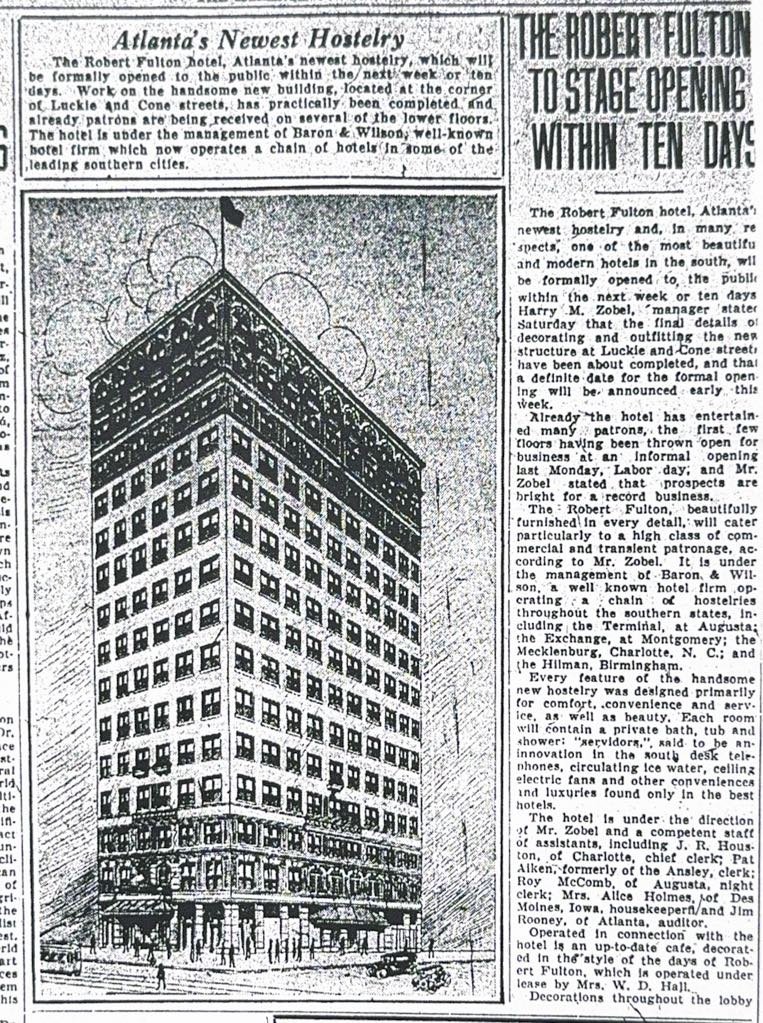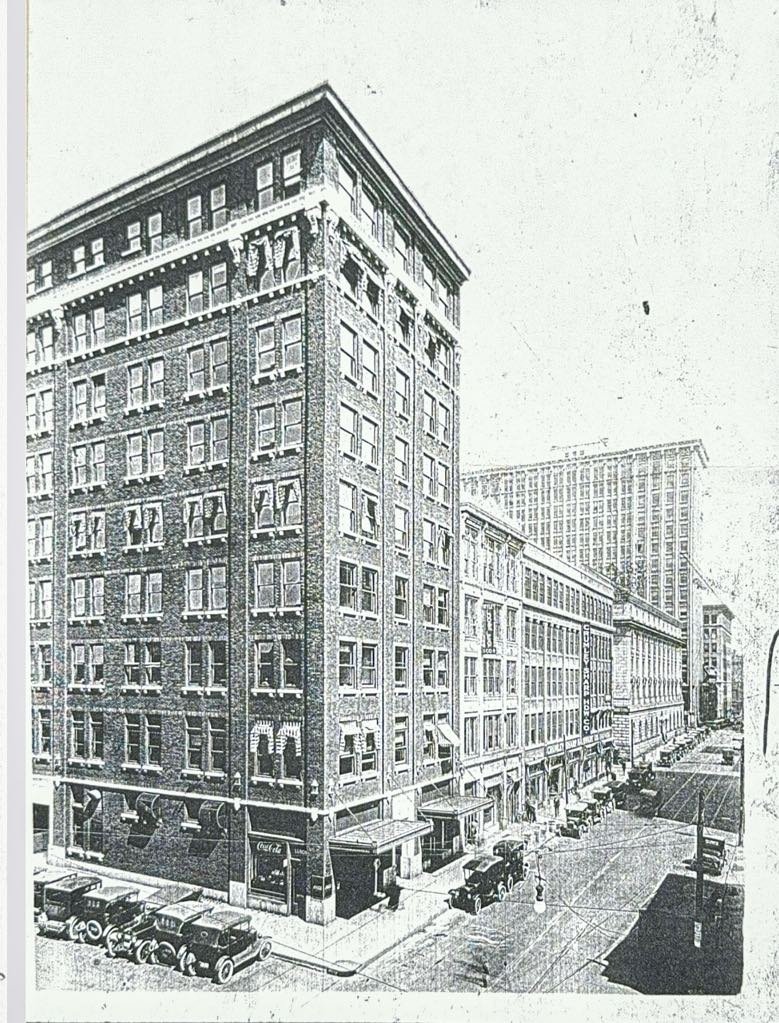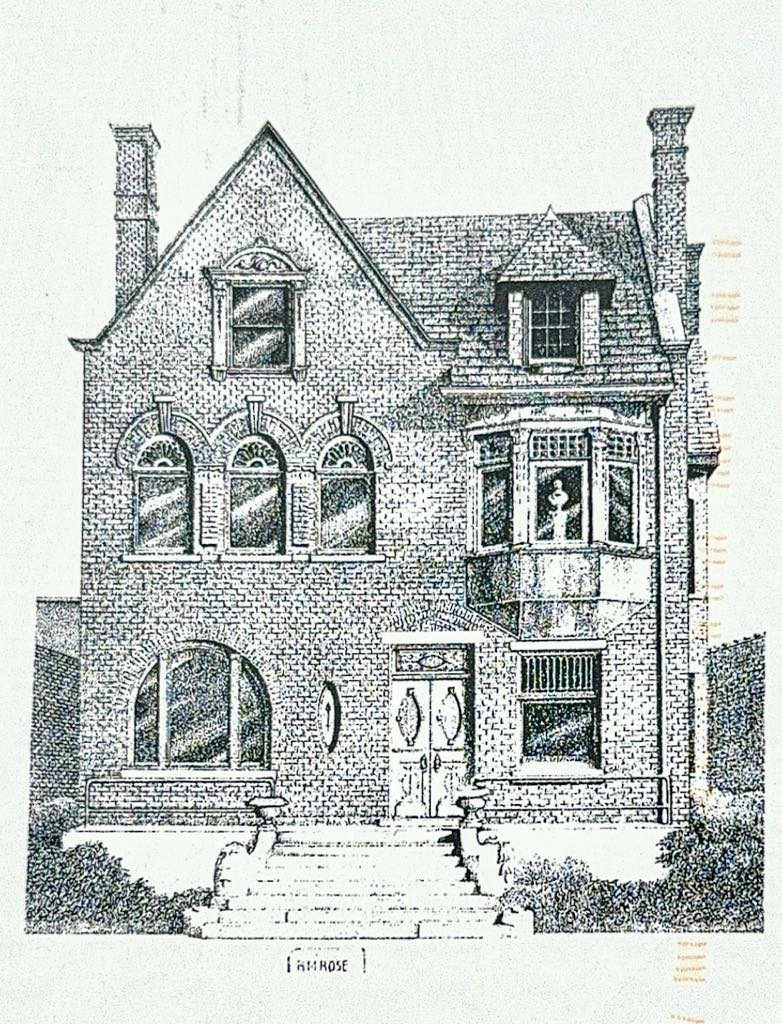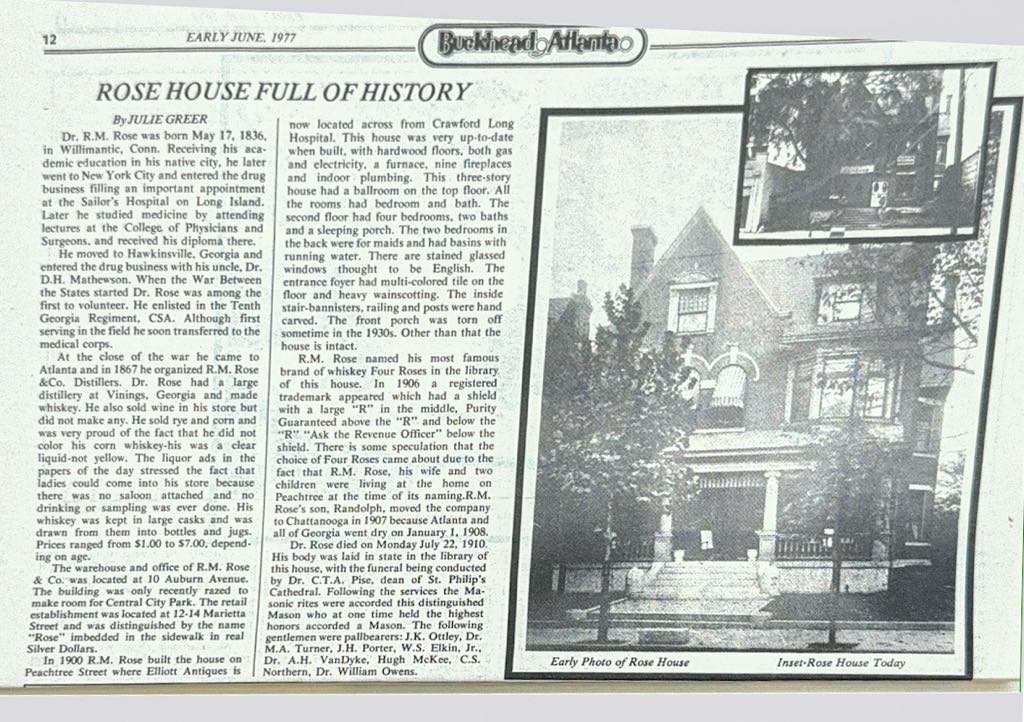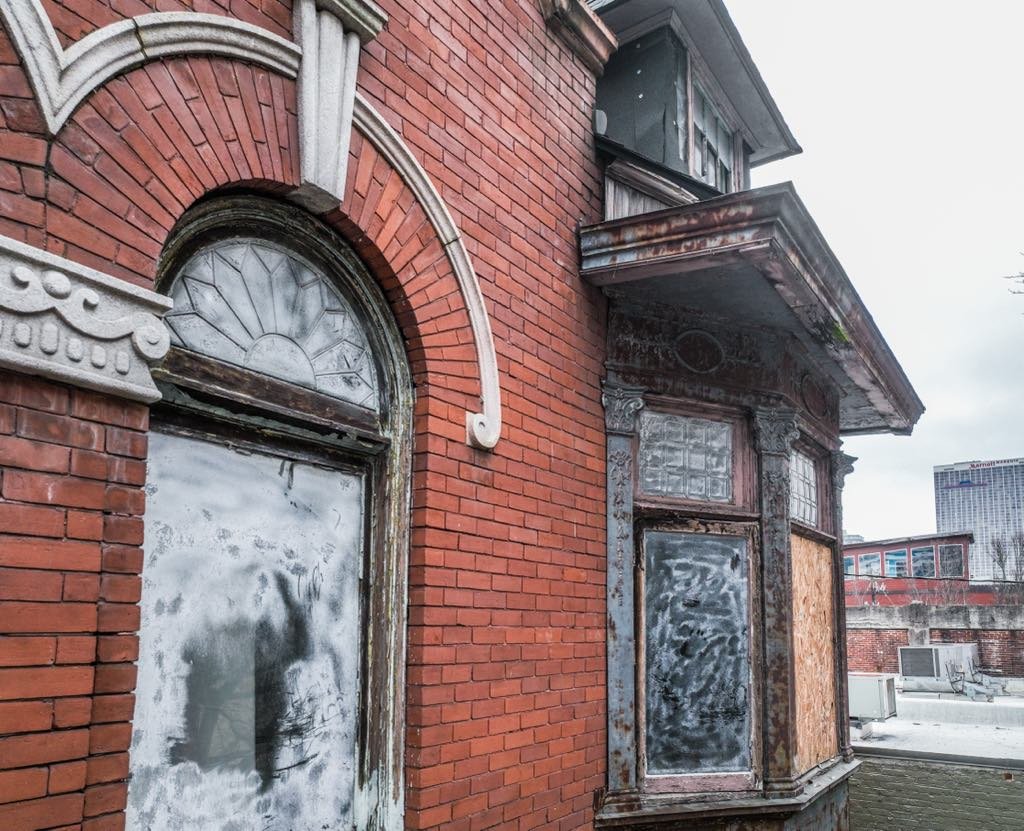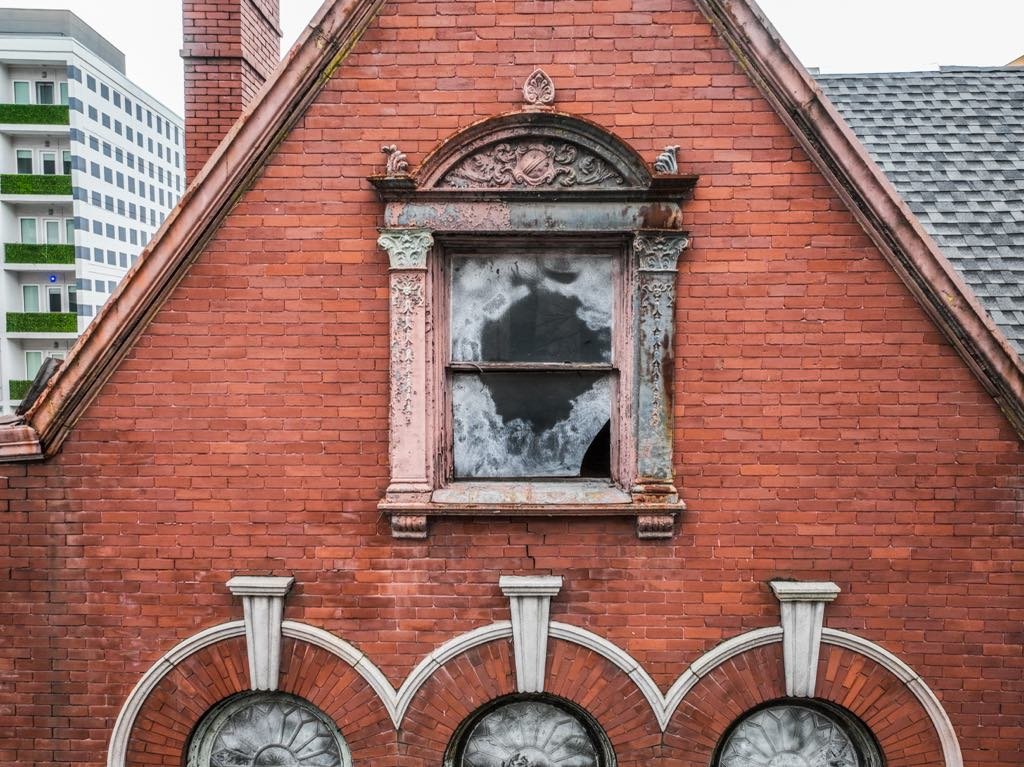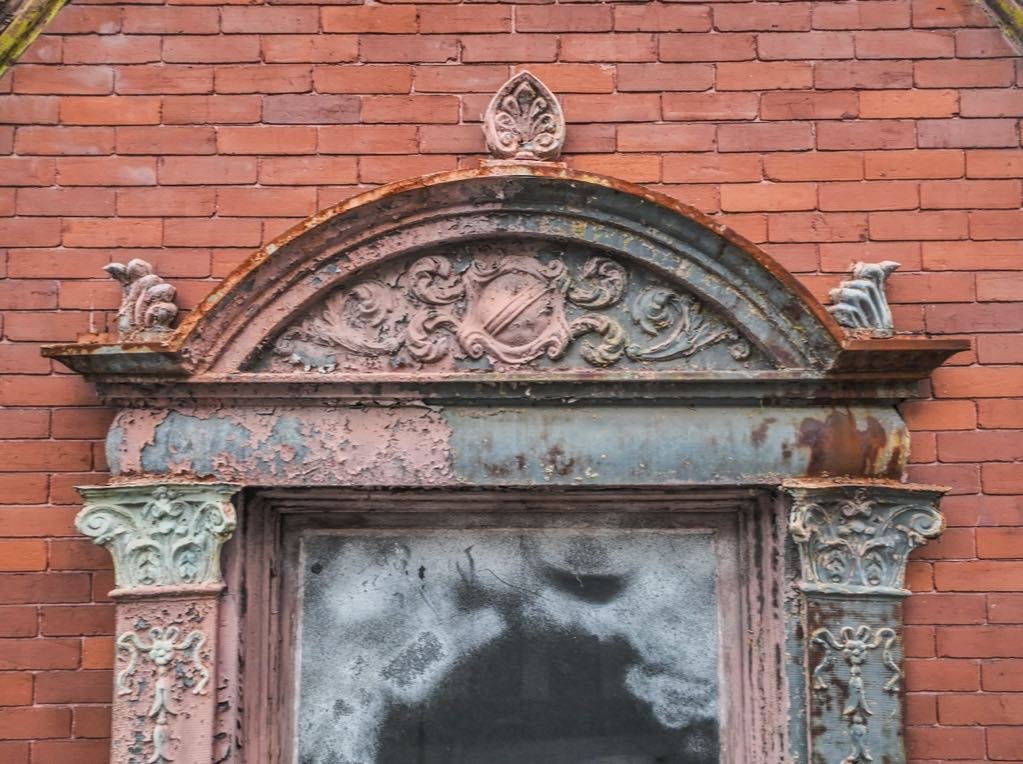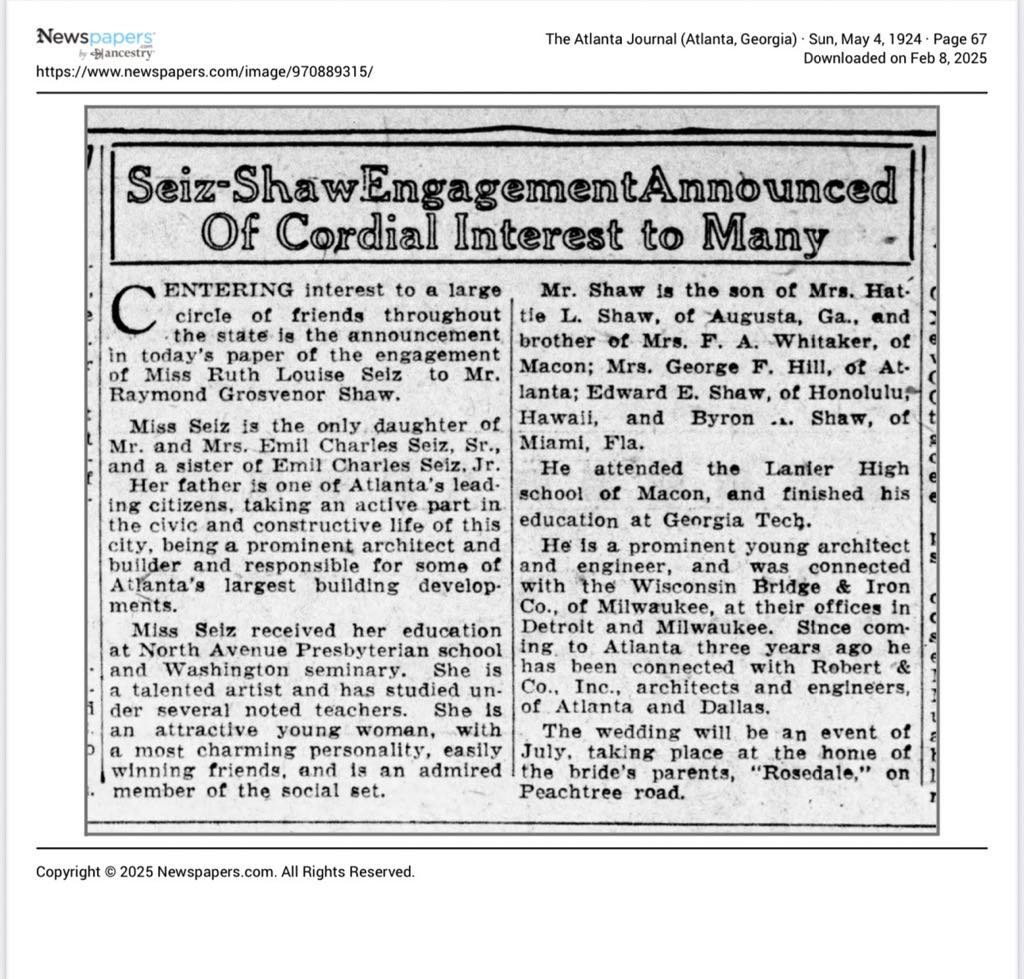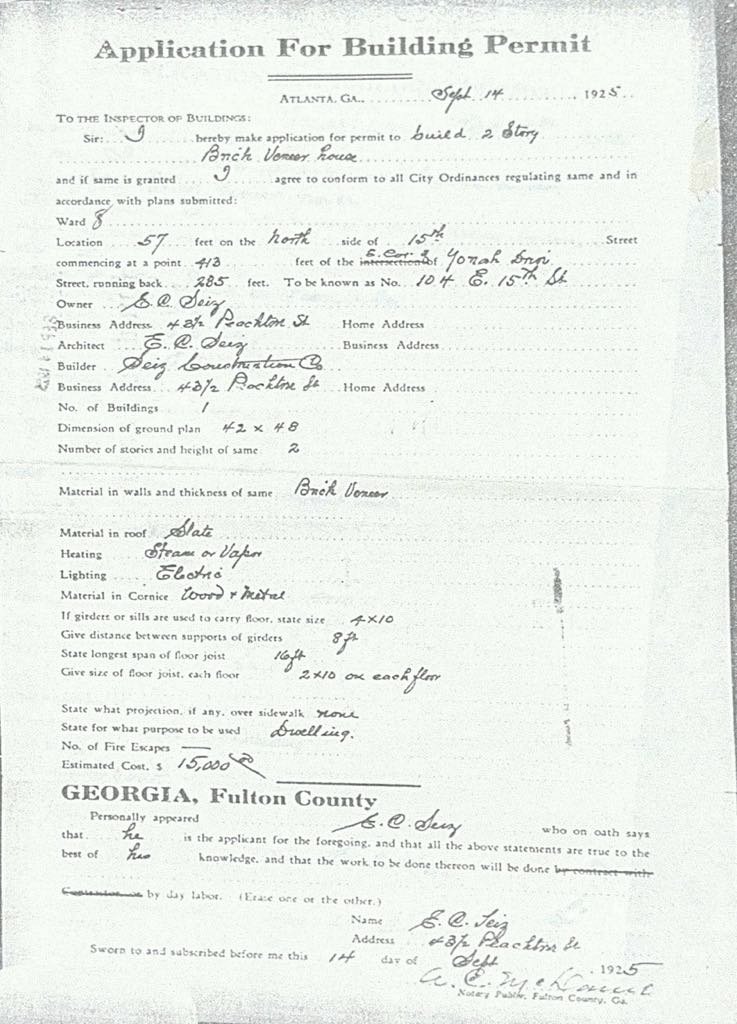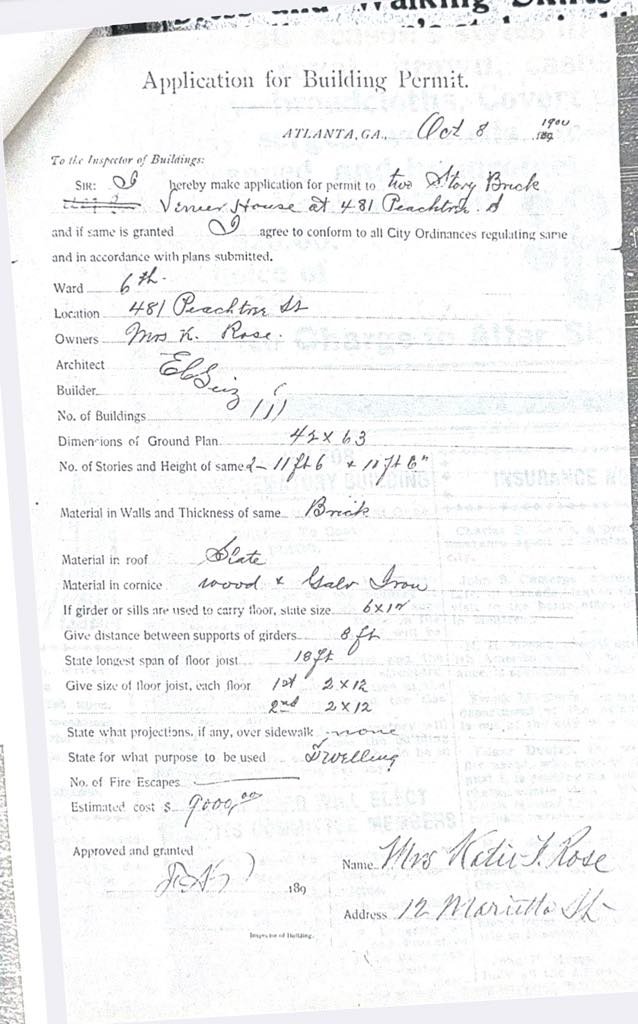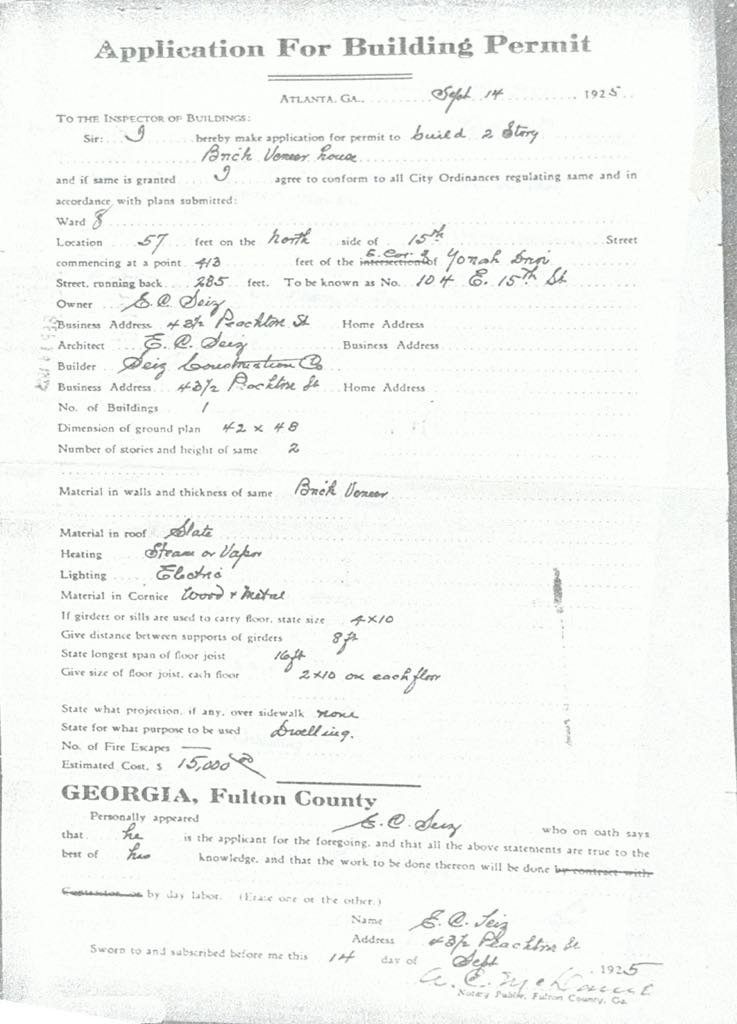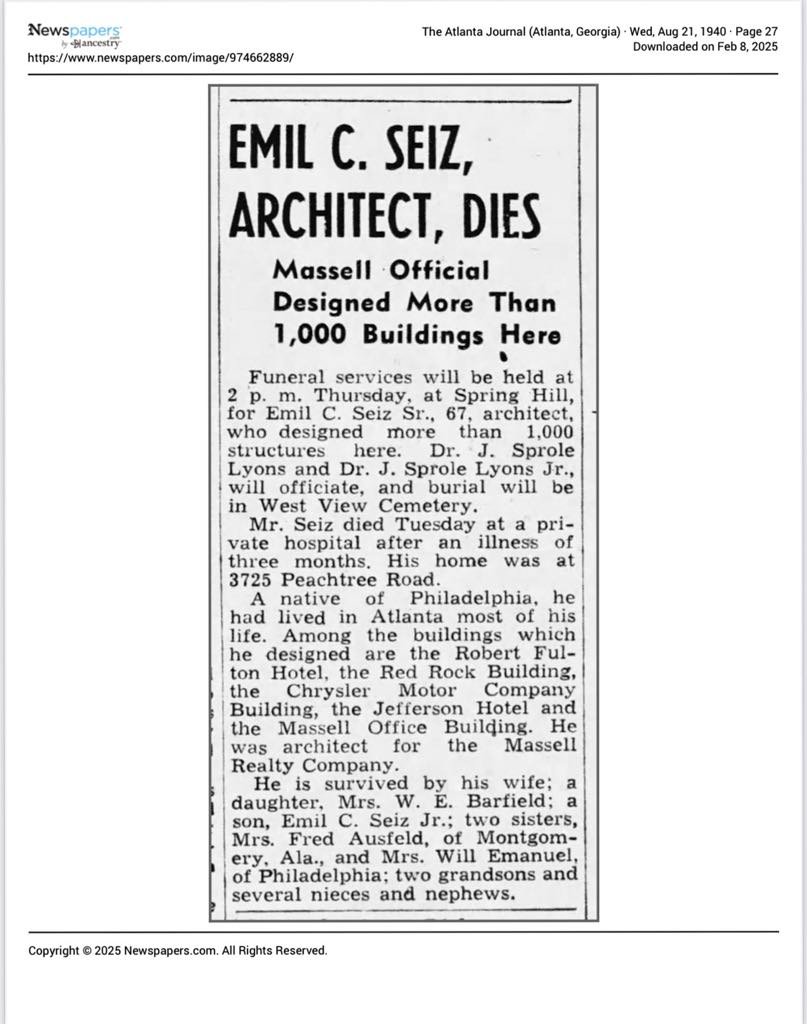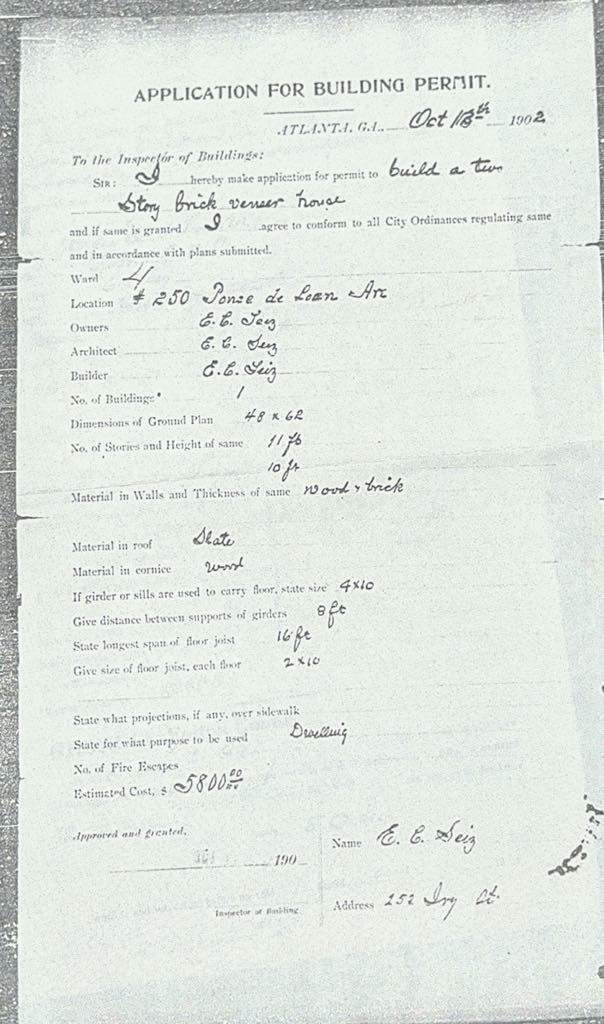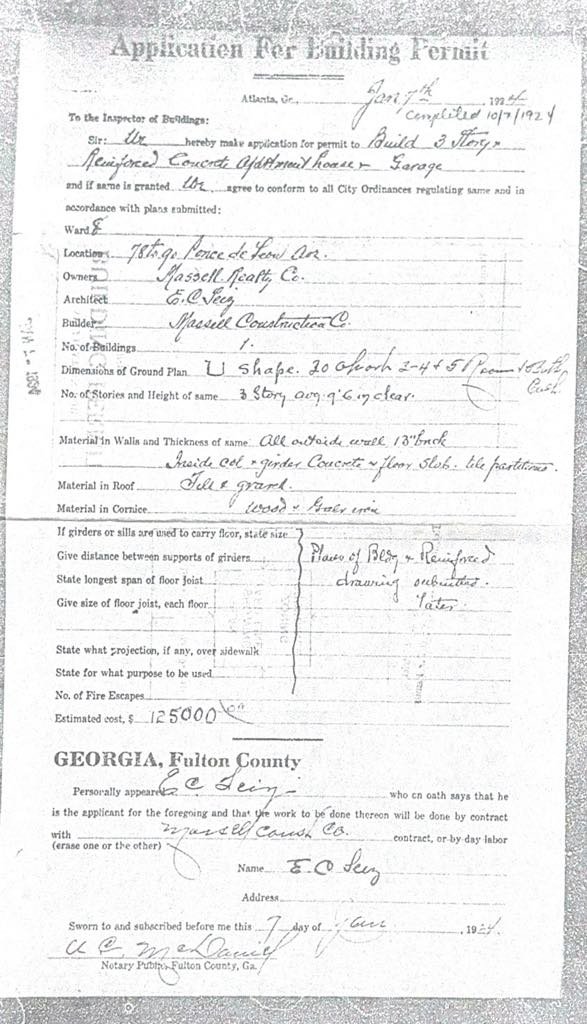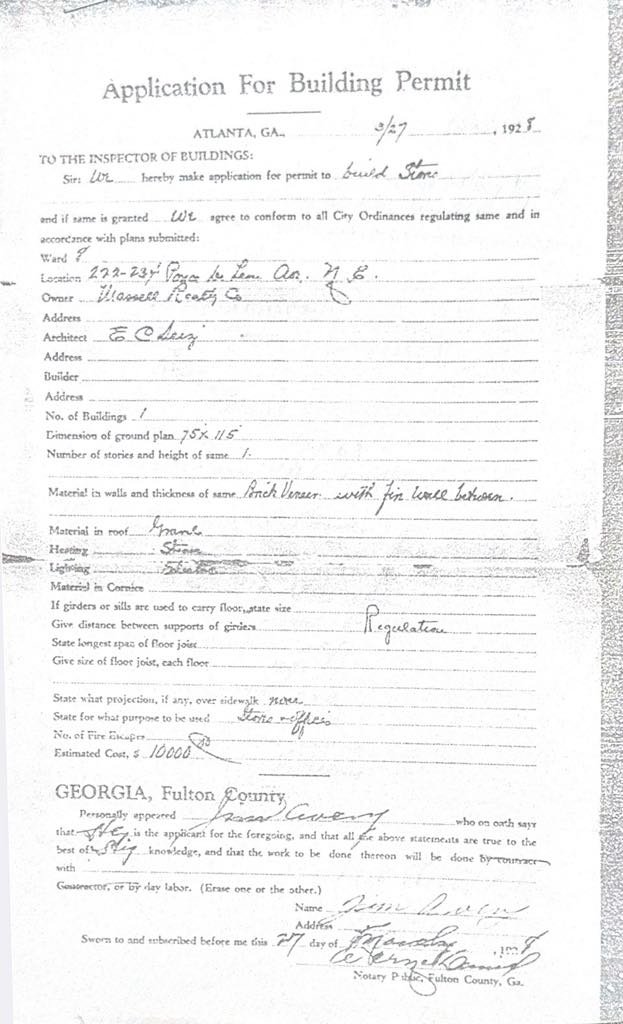The Architectural Legacy of Emil Charles Seiz: A Pillar of Atlanta's Skyline
Emil Charles Seiz playing music for his family.
Emil Charles Seiz, a name synonymous with innovation and grandeur in the architectural landscape of Atlanta, emerged as one of the city's leading citizens in the late 1800’s and early 1900’s. With an impressive portfolio that includes over 1,000 structures, Seiz's work significantly shaped the urban fabric of Atlanta, leaving a lasting legacy that continues to influence the city's architectural identity today.
A Visionary Architect
Moving to Georgia from Philadelphia, in a time when Atlanta was rapidly transforming from a post-Civil War city into a booming metropolitan hub, Seiz quickly established himself as a prominent architect and builder. In 1899, he took a pivotal step in his career by becoming a contractor and founding E.C. Seiz Co., a design-build company that allowed him to oversee both the design and construction processes. This dual role enabled him to merge creativity with practicality, ensuring that his visions were realized with precision and quality.
Seiz's designs were characterized by a blend of aesthetic appeal and functional design, reflecting the aspirations of a city on the rise. His vision extended beyond mere construction; he aimed to create spaces that would enhance the quality of life for the people of Atlanta.
Iconic Structures
Among the many landmarks that bear his signature, the Robert Fulton Hotel stands out as a testament to his architectural prowess. This hotel not only provided luxurious accommodations but also served as a social hub, embodying the spirit of hospitality that Atlanta is known for. Similarly, the Red Rock Building and the Chrysler Motor Building exemplify Seiz's ability to integrate contemporary design with the cultural context of the time, making them integral parts of Atlanta's historical narrative.
The Jefferson Hotel, another of Seiz's masterpieces, showcased his skill in creating grand public spaces that invited community engagement. Meanwhile, his apartment buildings catered to the growing population, offering stylish living options that met the demands of urban life.
Perhaps one of the most enduring legacies of Emil Charles Seiz is the Rufus Rose House, which he also built. This historic residence, still standing proudly on Peachtree Street, serves as a reminder of Seiz's contributions to residential architecture in Atlanta. Its design reflects a unique blend of elegance and practicality, showcasing his ability to adapt to the needs and preferences of his clients.
The Next Generation: Charles Stanley Seiz
Continuing the family legacy of architectural excellence, Emil Charles Seiz's great-great-grandson, Charles Stanley Seiz—known as Charlie—has made significant strides in the field of architecture and construction. As the owner of Evolve Design and Build, Charlie embodies the spirit of innovation that has characterized the Seiz family for generations. Graduating from Southern Polytechnic University with a bachelor's degree in architecture, he has seamlessly integrated his academic training with practical experience in the construction industry.
Charlie’s approach to architecture mirrors his ancestor's vision, as he emphasizes the importance of creating spaces that not only meet functional needs but also enhance community engagement. As a seasoned professional in construction technology, Charlie served as a Virtual Construction Manager, thriving at the intersection of people, technology, and multifaceted challenges. His leadership enables him to guide teams through the various stages of the construction process, ensuring each project reflects the quality and integrity associated with the Seiz name.
His expertise extends beyond traditional building methods to encompass advanced applications in business information modeling (BIM) technologies. Over his 14 years of experience in BIM construction technology, Charlie has successfully managed numerous large commercial construction projects, including iconic Atlanta venues such as the Mercedes Benz Stadium and State Farm Arena. With a track record of overseeing construction projects worth over $10 billion, he demonstrates an unwavering commitment to delivering high-quality results under tight timelines.
Charlie's genuine interest in people's stories and his dedication to understanding their needs make him a natural connector in the industry. His appreciation for diversity—whether in technology, personalities, or cultures—enables him to foster collaboration among stakeholders, creating an environment where innovative solutions can thrive. This commitment to community and connection reflects the foundational principles established by Emil Charles Seiz.
A Lasting Impact
Emil Charles Seiz's influence on Atlanta's architectural landscape cannot be overstated. His commitment to quality and innovation helped define the city's character, paving the way for future generations of architects and builders. As Atlanta continues to evolve, the structures he designed remain as vital pieces of its history and identity.
In a world where cities are constantly changing, Emil Charles Seiz's work stands as a tribute to the art of architecture and the power it holds to shape communities. His legacy is not just in the buildings that remain, but in the spirit of ambition and creativity that he inspired in others. Through Charles Stanley Seiz, the vision and values of Emil Charles Seiz live on, ensuring that the next generation continues to contribute to the city’s growth and identity.
As we celebrate the contributions of both Emil Charles Seiz and his great-great-grandson Charlie, we recognize the enduring impact of their work on Atlanta's skyline. Together, they represent a lineage of visionaries committed to enhancing the built environment, ensuring that the city continues to thrive, reflecting the dreams and aspirations of those who came before it.
Citation: Kenan Research Center at Atlanta History Center
